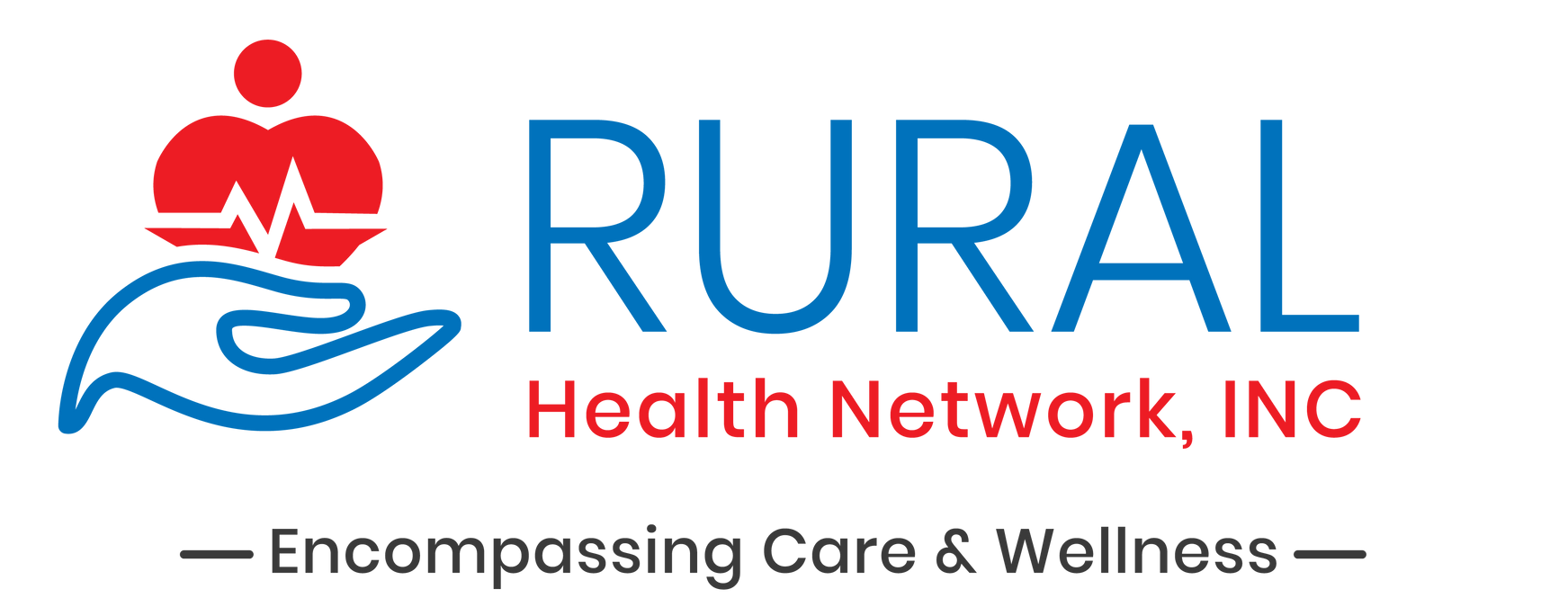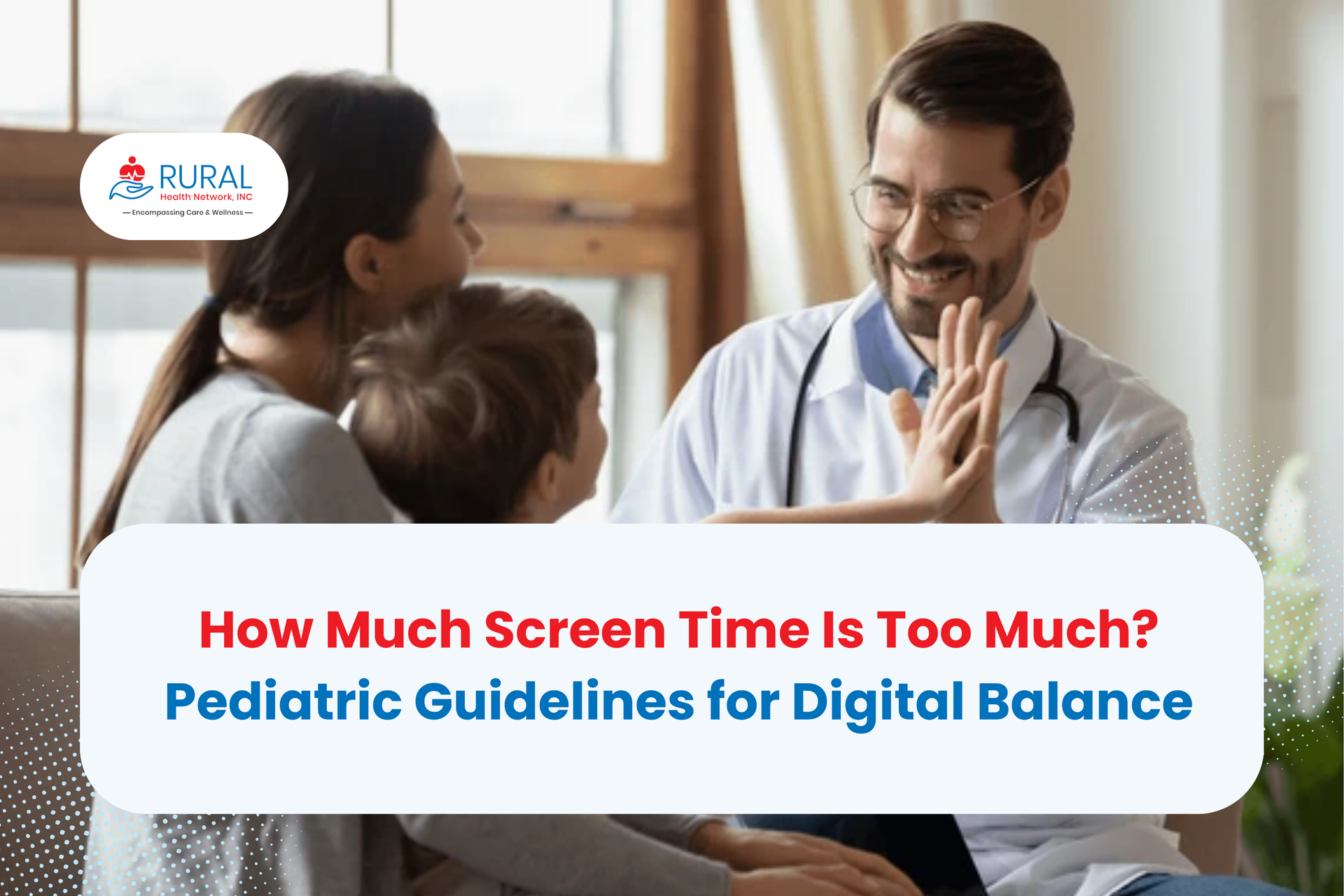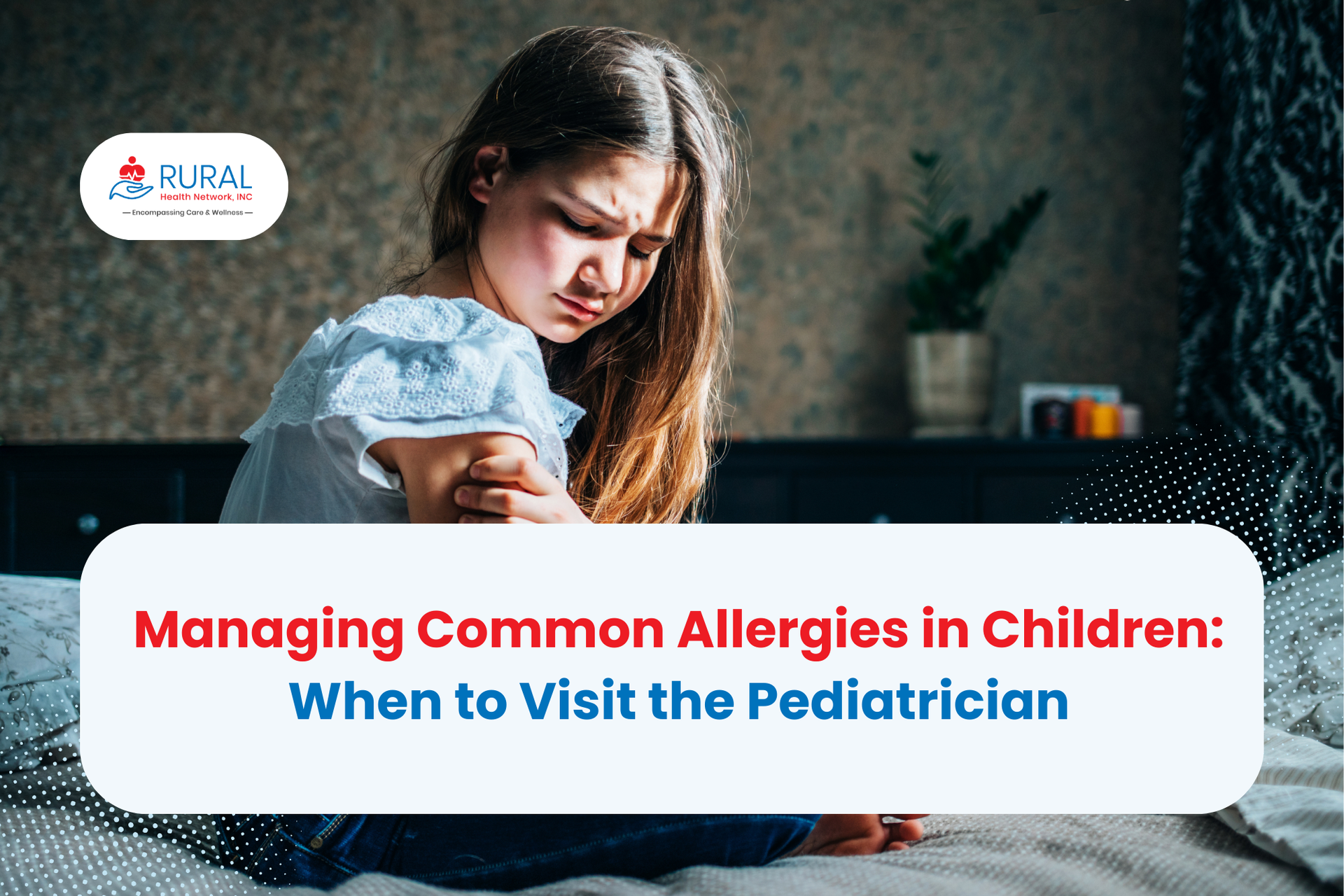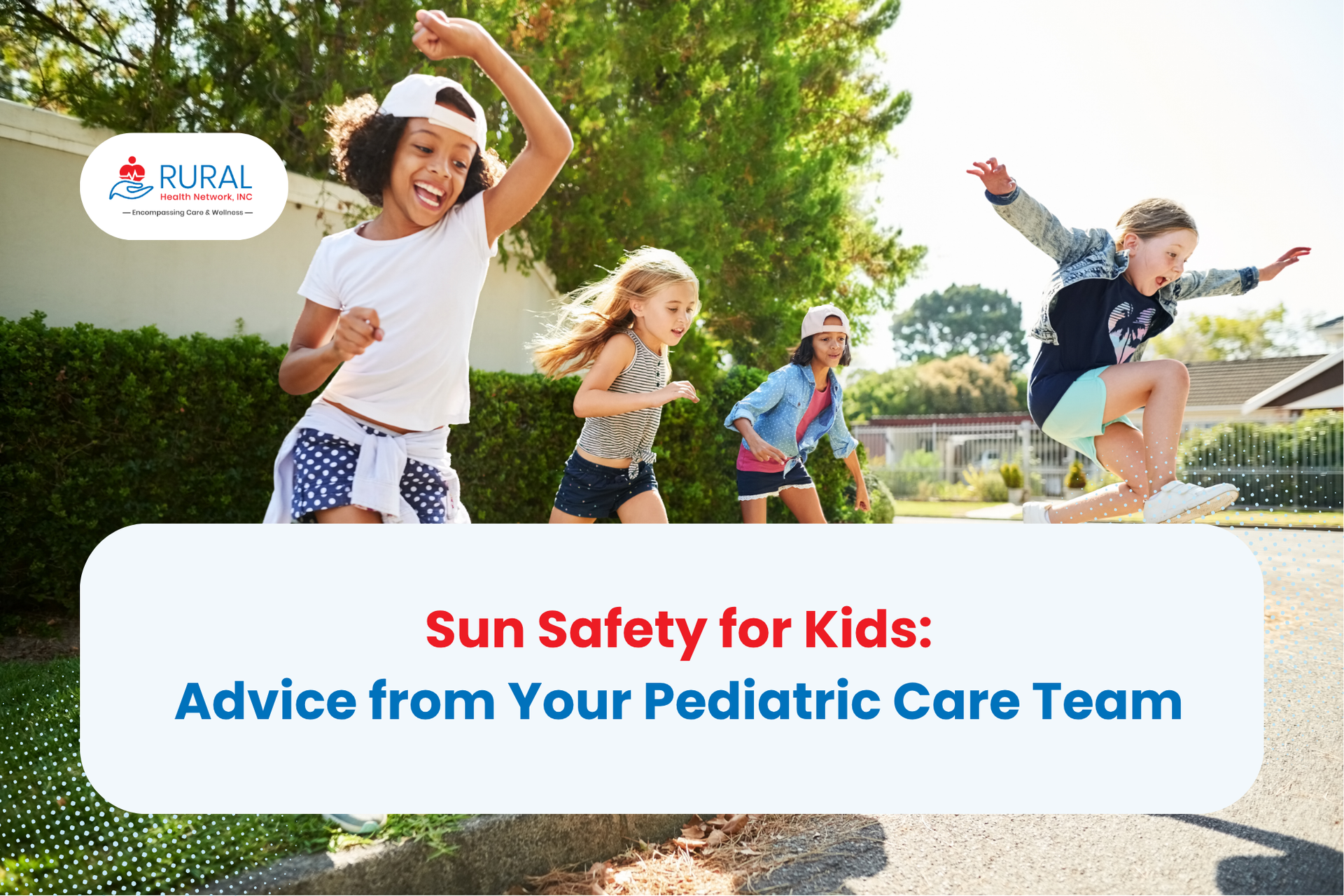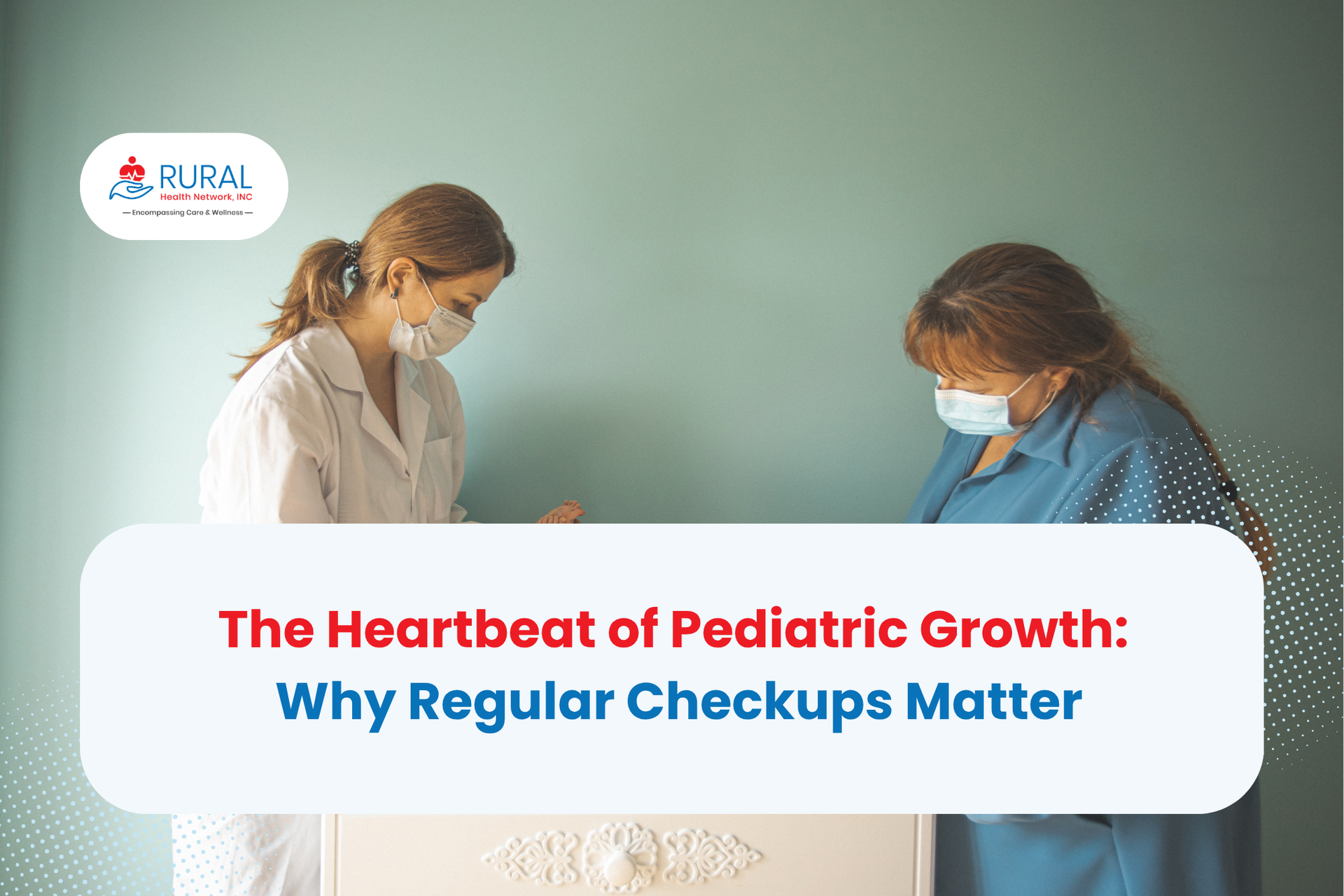All children grow and learn at their own pace. Some are full of energy, some are quiet. Some talk early, others take a little more time. That’s all normal.
But sometimes, a child may show signs that they’re having a harder time with activities like paying attention, talking, or playing with others. These could be early signs of conditions like ADHD or autism. In rural areas, it can be harder to spot these signs early because there aren’t always specialists nearby. However, the sooner we notice and understand these signs, the sooner we can help.
While this may seem like putting a label on a child, it’s really all about giving families answers, support, and a way forward. At
Rural Health Network, we’re here to help families understand what’s happening and know what to do next by providing tools, resources, and compassionate care to support children better.
Support Starts with a Conversation
What’s the Difference Between ADHD and Autism?
When it comes to child development, terms like ADHD and autism are sometimes used together, but they’re not the same condition. Let’s understand the difference between the two so you know what to look for and what kind of support might help.
What Is ADHD?
ADHD, or attention-deficit/hyperactivity disorder, is a condition that affects how the brain manages functions like attention, movement, and self-control. Children with ADHD may find it harder to stay focused, sit still, or think before acting. But it’s not because they’re rude. Their brains simply process things differently.
What Is Autism?
Autism spectrum disorder (ASD) is a developmental condition that affects how a child understands the world around them. It can influence how they communicate, interact with others, or handle changes in routine. Some myths about this condition still linger, like the idea that autism is caused by poor parenting or vaccines, but these have been widely debunked. In simple terms, it means the child’s brain is developing and working differently.
Why Do These Happen?
While there’s still a lot to learn, researchers believe both ADHD and autism can be linked to:
- Brain developmental difference
- Genetics (they often run in families)
- Environmental factors during pregnancy or early childhood
It’s important to know: Nothing a parent does
can
cause ADHD or autism. These are natural differences in how a child’s brain grows or functions. If you want to find out how to better support your child as they develop, don’t hesitate to reach out to the professionals at
Rural Health Network or your trusted pediatricians.
Can a Child Have Both Autism and ADHD?
Yes, it’s possible. Some children can have signs of both ADHD and autism. This is known as
AuDHD, a term used to describe someone who has both conditions, which is more common than you might expect.
Early Signs of ADHD in Children
ADHD signs often start in early childhood, and some can appear as early as preschool. While every child has bursts of energy or occasional trouble listening, ADHD behaviors are more frequent, more intense, and can affect everyday life at home, school, and social settings.
Here are some early ADHD symptoms in children:
Constant Movement or Restlessness
- Always on the go—running, climbing, fidgeting, even when they’re supposed to be sitting
- Struggles with quiet play (e.g., needs to be moving or talking during story time)
Trouble Paying Attention
- Gets distracted easily, even during playtime or while watching a favorite show
- Struggles to follow instructions or finish simple tasks
Impulsive Behavior
- Blurts out answers before a question is finished
- Interrupts conversations or has difficulty waiting for their turn (e.g., during games or group activities)
Easily Distracted, Even at Play
- Starts one activity, then quickly jumps to another
- Has trouble staying focused, even on fun tasks like puzzles or pretend play
Early Signs of Autism in Children
Just like ADHD, autism can show signs early in a child’s life, sometimes
as early as 12 months. While every child develops at their own pace, certain patterns may stand out over time.
Just keep in mind, autism is a spectrum, which means signs can look very different from one child to another. Some children show all of these signs, others only a few. Here are some early behavioral signs of autism:
Delayed Speech or Limited Communication
- Not saying single words by 12–24 months
- Repeats words or phrases instead of using them to communicate
Lack of Eye Contact
- Avoids or rarely makes eye contact
- Seems “in their own world” even when spoken to
Limited Gestures
- Doesn’t point to objects of interest
- Rarely waves or uses gestures to communicate needs
Little Interest in Playing with Others
- Prefers playing alone or doesn’t engage in pretend play
- Struggles to share or take turns
Rigid Routines or Repetitive Behaviors
- Lines up toys or objects in the same way every time
- Gets upset if a routine or environment changes.
Overlapping Signs: When It’s Hard to Tell Them Apart
If you’ve read the signs for ADHD and autism and thought, “Some of these sound alike,” you’re not alone, and that’s why people often mix them up.
Both ADHD and autism symptoms can sometimes include:
- Trouble focusing or staying on task
- Difficulty with social interactions
- Strong reactions to changes or transitions
- Challenges with communication
Because the signs can look similar, a
proper evaluation is key. It’s time to talk to a trained healthcare provider if:
- Developmental milestones (like talking, making eye contact, or playing with others) seem delayed.
- Behaviors like inattention or hyperactivity are persistent, not occasional.
- Your child struggles socially or gets extremely upset by small changes in their routine.
Don’t Self-Diagnose
It’s natural for parents to search online and compare symptoms, but only a professional can make a diagnosis. If something feels “off” or your gut tells you to ask questions, trust your instincts. Seeking answers isn’t overreacting; you’re just advocating for your child.
How Rural Health Network Supports You and Your Child
If you’ve noticed some of these early signs in your child, you might wonder: “Is this just a phase, or should I be concerned?”
The truth is, every child grows differently, but if certain behaviors happen often, in different settings (like home and school), and make daily life harder, it’s worth reaching out for guidance. Let
Rural Health Network help you get the answers you need. We make it easier for families to receive the support through:
- Developmental screenings and referrals for early intervention
- Behavioral health consultations with caring professionals
- Telehealth visits so you can access help without the long drives
- Connections to local resources like therapists, support groups, and school programs
Every child deserves to feel understood, supported, and celebrated for who they are. With us, you’ll work with compassionate and professional experts who walk with you step by step, question by question, from your first call all the way to your child’s brighter future.
Early Support Makes a Difference
Frequently Asked Questions
Can my child grow out of ADHD or autism?
While some behaviors may improve with time and support, ADHD and autism are lifelong conditions. That said, with the right tools, therapies, and environment, many children learn to manage challenges and thrive in their own way.
What’s the difference between being shy and showing signs of autism?
Shyness is typically a personality trait; children may warm up over time. Autism often involves more consistent difficulties with communication, eye contact, and social understanding, regardless of familiarity with others.
Are ADHD and autism more frequent in boys or girls?
ADHD and autism are more commonly diagnosed in boys, but that doesn’t always mean they’re more frequent. Girls may show different or less obvious signs, which can lead to underdiagnosis or later identification. That’s why personalized evaluation is important for every child, regardless of gender.
When should I seek help for my child’s behavioral issues?
If your child’s behavior is frequent, intense, or affects daily life at home, school, or with others, it may be time to seek help. If something feels off or you’re unsure, reaching out to a pediatrician or healthcare provider is a good first step.


